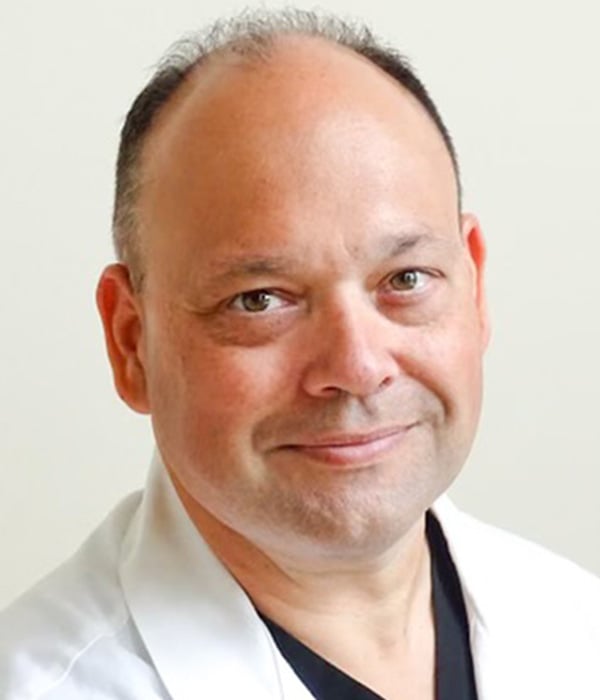
October 21-24, 2024
Orlando CME Conference at Walt Disney World®
Registration Options
Pricing Information
Register Now!
In-Person
Virtual
Credit Information
Earn up to 39 CME credits and 9 APRN Pharmacology credits at this CME Conference. This activity is approved for ACCME, AMA, ANCC, APRN and AAPA credit. Please see CME Credit Information for details.
Pricing Information
Don’t Miss Our Early Deal Specials!
The earlier you register, the more you save!
Super Saver
On/Before May 21
$987
$827
Early Bird
On/Before June 21
$1,087
N/A
Advance
On/Before Sept. 21
$1,137
$877
Standard
After Sept. 21
$1,157
$927
Bonus!
In-person conferences include FREE virtual access!
Includes a FREE On-demand course by topic! Up to 13 CME hours - a $297 value!
Receive a $100 rebate check when you book 3 nights at our host hotel using our group code!
Orlando offers a perfect blend of entertainment, recreation, and relaxation, making it an excellent location for CME. You can earn CME credits while making memories with family and friends. There's something for everyone, from theme parks to the Everglades to shopping and the Kennedy Space Center.
We have negotiated significantly reduced room rates for Skin, Bones, Hearts & Private Parts guests. If you need hotel reservations and have not yet made your arrangements, you are encouraged to do so immediately as rooms may sell out prior to the cutoff dates listed below.
HOTELRATES AND OFFERS
Reduced room rates start at $272 plus tax for Casitas rooms and $322 plus tax for Tower rooms.
Rates are only guaranteed until September 27, 2024.
To make reservations, please call 407-939-4686 and reference group code: SBHPP 2024
Receive a $100 rebate check by booking your guest room at our host hotel!
BONUS: In-person registration includes FREE virtual access during the conference; watch sessions from your hotel room, poolside, or wherever there’s a WiFi connection. Just bring your personal device!
Conference Location
Disney’s Coronado Springs Resort
1000 West Buena Vista Drive
Lake Buena Vista, FL 32830
Daily Schedule
Whether you practice full-time and strive to sharpen your skills, or you work occasionally and need to improve your knowledge base, there’s something for everyone here!
Fun Things To Do
See our recommendations for fun things to do and see while in Orlando for our CME Conference. Share a magical experience with Mickey or other Walt Disney World characters.
Book your reservation under our group code and receive these resort amenities. Click here to learn more.
| RESORT AMENITIES | OTHER RENTAL COMPANIES | SANDESTIN RENTALS |
|---|---|---|
| Owner Fees | $200+ | NA |
| Service Fees | $150 | NA |
| Cleaning Fees | $150 | NA |
| Cancellation Fees | $500 | NA |
| Resort Tram * | Not Available | FREE – Tram service starts at 6:30 am, see below |
| Health Club/Fitness Center | $40/Day | FREE |
| Bicycle Rentals (4hrs for 2) | $120 | FREE |
| Kayak & Boogie Board Rental | Kayak $35/hr Boogie Board $10/hr | FREE |
| 2 Pools w/ Towel Service | NA | FREE |
| Tennis Court Time | $17/person/hour | FREE |
Q: What are the differences in reserving Sandestin accommodations via the link above vs. renting through other companies like VRBO, Airbnb, etc?
A: Booking directly via the link above guarantees guests a much more enjoyable and budget-friendly stay. Please see details above.
Q: Can I enjoy the resort tram if I don’t book directly through Sandestin?
A: Parking is free for all attendees. The tram will begin complimentary tram service at 6:30 am to transport attendees to the meeting Tuesday – Friday. You can arrive stress-free and enjoy a nice relaxing breakfast and not worry about finding a place to park. Plus, you’ll never get caught in the rain, and your family can use your car to head to the beach, outlets, and other fun activities. (Please see details above)
- Experience all the resort amenities – complimentary in-room Wi-Fi, Disney’s Magical Express to/from airport, Extra Magic Hours™, Disney property shuttles, and more
- Sleep a little later and never be late.
- Restaurants on-site for your enjoyment.
- Networking at all hours – maybe even on the beach.
- All your friends stay at the conference hotel.
- Staying on-site allows you to run back to the room to drop off/pick up anything you need.
- Don’t get stuck in inclement weather and traffic, and be assured a parking space.
Top Reasons To Stay With Us
Top Reasons To Stay With Us

- Breakfast/Lunch: Breakfast will be provided as part of your registration and will be available Monday – Thursday from 6:30 – 8:00 am. Refreshments will be served throughout the day as well. Please refer to final schedule for times. Lunch is on your own (sponsored lunches will be announced if applicable).
- Beverage Service: Provided each day of conference.
Meal Plans
Meal Plans

Parking
Overnight self-parking is complimentary to Guests staying at Disney Resort hotels at Walt Disney World Resort
Standard self-parking is complimentary for day Guests
Valet service is $33 per night (sales tax included).
Parking

- Disney’s Coronado Springs Resort
- 3 Pools
- Campfire Activities
- Complimentary bus transportation to and from all Disney Theme Parks and Water Parks is available
- Complimentary self-parking
- Complimentary Wi-Fi
- Expansive lake, garden, courtyard views and more
- Fitness Center and La Vida Health Club
- Movies Under the Stars
- Rix Sports Bar & Grill
- Three Bridges Bar and Grill at Villa del Lago
- Toledo - Tapas, Steak & Seafood
Hotel Amenities
Hotel Amenities

Important Information Regarding Hotel Reservations
We kindly ask that you make your hotel reservation at our host property. We are committed to these contractual obligations in order to bring the guest room rates down from regular pricing. If you stay at a different hotel, we may fall short of our housing obligations and will be responsible for paying lost income to our hotels. This could mean higher registration fees and fewer benefits for participants. Thank you for your understanding and for making our educational programs the best they can be.
On occasion, travel websites may lure you with minor “discounts”, but please realize there are restrictions and penalties associated with these “deals.” By booking directly with our host hotel using our group code, you’ll not only receive a $100 rebate but also you’re guaranteed exclusive benefits such as renovated rooms, discounted resort fees, ability to change or cancel penalty-free and more.
Daily Session Info and Presentations
Whether you practice full-time and strive to sharpen your skills, or you work occasionally and need to improve your knowledge base, there’s something for everyone here! Perhaps you just want to stay current and pass your recertification exams. Plus, this exciting program allows participants to come early and/or stay over the weekend for a vacation. Discounted hotel rates apply! Schedule is preliminary.
Topics, times and presenters subject to change.
APRN Pharm Credit to be updated
Product Theater (Non-CME) denoted by *
*Number of hours depends on your course selection. Rx denotes Pharmacology hours. Daily CME credits listed are the maximum number of credits available for that specific day.
Sunday, October 20 – Early Registration 2:00 – 5:00 pm
Dermatology

Kara Roman
MMS, PA-C
Registration & Breakfast
Break
Lunch & Learn: Topic To Be Determined
Break
Orthopedics


Christopher Hemmer
DNP, ANP-BC, ONP-C, FAANP
Registration & Breakfast
Break
Sponsored Lunch or Lunch on Your Own
Break
Pain Management/Pharmacology Update

Jeremy Adler
DMSc, PA-C
Registration & Breakfast
Break
Sponsored Lunch or Lunch on Your Own
Break
Cardiology & Emergency Medicine


Sarah Schettle
PA-C, MS, MBA
Registration & Breakfast
Break
Sponsored Lunch or Lunch on Your Own
Break
Diabetes

Deborah Hinnen
APN, BC-ADM, CDCES, FAAN, FADCES
Registration & Breakfast
Break
Sponsored Lunch or Lunch on Your Own
Break
Women’s Health

Nancy Berman
MSN, ANP-BC, NCMP, FAANP
Registration & Breakfast
Break
Lunch on Your Own
Break

Come for the meeting and then stay for the Magic. Mixing business with pleasure is easy when you make the most of your free time with Disney’s Special Meeting/Convention Theme Park Tickets. Explore all FOUR of the Walt Disney World® theme parks – Magic Kingdom®, Epcot®, Animal Kingdom® and Hollywood Studios™. As a Skin Bones Hearts & Private Parts attendee, you have access to special Theme Park tickets* and advance purchase savings with added BONUS on multi-day tickets for you and your family. For more information and to purchase your tickets, click here for details.
*Please note tickets are only available through Disney, not Skin, Bones, Hearts & Private Parts. Magic Kingdom®Fairytale dreams come true for children of all ages at Magic Kingdom park. Delight in classic attractions, enchanting fireworks, musical parades and beloved Disney Characters across 6 whimsical lands. See fantasy become a reality as you explore Adventureland, Frontierland, Liberty Square, Fantasyland, Tomorrowland and Main Street, U.S.A. areas. Zoom through space, become a swashbuckling pirate and watch fireworks light up the sky over Cinderella Castle.
Epcot®Explore exciting attractions, enchanting international pavilions, award-winning fireworks and seasonal special events. Celebrating the human spirit, Epcot has 2 distinct realms: Future World, which features technological innovations, and World Showcase, which shares with Guests the culture and cuisine of 11 countries: Mexico, Norway, China, Germany, Italy, the United States, Japan, Morocco, France, United Kingdom and Canada.
Animal Kingdom®Encounter exotic animals and exciting adventures at Disney’s Animal Kingdom park, one of the largest animal theme parks in the world. Home to more than 2,000 animals across 300 species, the park reflects Walt Disney’s dedication to conservation and is committed to animal care, education and research. Explore 6 enthralling lands: Oasis, Discovery Island, Africa, Rafiki’s Planet Watch, Asia and DinoLand, U.S.A. areas.
Hollywood Studios™Movie magic comes to life at Disney’s Hollywood Studios, awash in the glitz and glamour of Hollywood’s Golden Age. Step into the action with attractions based on blockbuster movies and top TV shows, and delight in exciting entertainment that puts you center stage. With the vibrancy of a bustling movie set, this park features 8 sections: Hollywood Boulevard, Echo Lake, Sunset Boulevard, Streets of America, Commissary Lane, Pixar Place, Mickey Avenue and Animation Courtyard areas.
Universal StudiosAt this real, working film and TV production facility you’ll find an amazing array of rides, shows, movie sets and attractions that put you right in the picture. Universal Studios has everything from entertaining shows that take you behind the scenes of the movie-making process to state-of-the-art rides that make you part of the action.
Universal’s Islands of Adventure ®Around every bend is another epic adventure. Take an unforgettable journey through the uniquely themed islands of Universal’s Islands of Adventure®, where the world’s most cutting edge rides, shows and interactive attractions bring your favorite stories, myths, cartoons, comic book heroes and children’s tales to life. A huge attraction at this park is The Wizarding World of Harry Potter™ – Hogsmeade™ at Islands of Adventure. Pass through the towering Hogwarts™ castle gates and explore the familiar passageways, classrooms and corridors.
Discovery Cove®This theme park includes a one-of-a kind experience where you can swim with bottlenose dolphins, feed tropical birds, play inches from a family of otters, and even walk on the ocean floor—all in one day.
SeaWorld® OrlandoExperience some of the most amazing Orlando attractions at SeaWorld®. Looking for thrills? Ride our flying roller coaster Manta® or take on our blazing fast floorless coaster Kraken! Enjoy memorable live shows and unique attractions such as our newest addition Antarctica: Empire of the Penguin. Most importantly, SeaWorld is all about animals: From Shamu® to beluga whales, polar bears to bottlenose dolphins and rays to sea turtles, marine life abounds!








